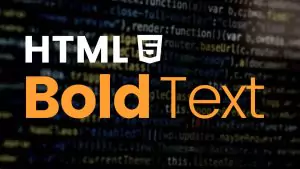When it comes to structuring and styling content in HTML, the <span> element plays a crucial role. In this article, we will explore what the <span> element is, its purpose, and how it can be utilized effectively in web development.
Understanding the <span> Element
The <span> element is a versatile inline container that does not inherently represent any specific content or semantic meaning. Instead, it acts as a grouping element primarily used for styling purposes or when other semantic elements are not suitable. It is similar to the <div> element, but with one key distinction – while <div> is a block-level element, <span> is an inline-level element.
The Purpose of <span>
Styling Content
One of the primary use cases for the <span> element is to apply specific styles or classes to a group of elements. By using the class or id attributes, we can target and style multiple elements collectively. For example, if we want to highlight a particular section of text, we can wrap it with a <span> element and apply a CSS class to define the desired styling.
Sharing Attribute Values
Another use case for the <span> element is when multiple elements share the same attribute values. For instance, if a group of elements needs to have the same lang attribute, wrapping them with a <span> allows us to apply the attribute to all the elements simultaneously.
Best Practices for Using <span>
To ensure optimal usage of the <span> element, it is important to follow a few best practices:
- Semantics First: Always prioritize using semantic elements over
<span>when possible. Semantic elements provide better structure and meaning to your content. - Avoid Overuse: Use the
<span>element judiciously. If another element conveys the desired meaning or serves the purpose, opt for it instead. - Use CSS Selectors: Combine the power of
<span>with CSS selectors to target and style specific groups of elements efficiently.
Using <span> in HTML Coding
The <span> element is a valuable tool in HTML for styling content and grouping elements. It provides flexibility and allows developers to apply specific styles or attribute values to targeted sections of their web pages. By using <span> effectively and following best practices, developers can enhance the structure and presentation of their HTML documents. Remember to keep the usage of <span> balanced and prioritize semantic elements wherever possible.
FAQ
What are some examples of using the <span> element for semantic purposes?
While the <span> element is primarily used for styling and grouping purposes rather than conveying semantic meaning, it can still be used effectively in certain scenarios. For example, you can use <span> to highlight specific keywords within a paragraph or to apply inline formatting to a particular section of text.
Is the <span> element an inline-level or block-level element?
The <span> element is an inline-level element. Unlike block-level elements such as <div>, which create distinct blocks of content, <span> is meant to be used within a line of text or inline with other elements.
Does the <span> element have any specific attributes or limitations?
The <span> element does not have any specific attributes or limitations of its own. It only includes the global attributes that are available to all HTML elements. This allows developers to customize the behavior and appearance of <span> using attributes such as class, id, and style.
How can the <span> element be used to improve accessibility in HTML?
Although the <span> element itself does not have any inherent accessibility features, it can be used in combination with other elements to enhance accessibility. For instance, by wrapping a section of text with a <span> element, you can apply ARIA attributes or roles to improve accessibility for screen readers or assistive technologies. Additionally, using <span> in conjunction with appropriate semantic elements and proper document structure can contribute to overall accessibility and usability of the webpage.
Remember, accessibility should be a holistic consideration, and incorporating accessibility best practices throughout the entire HTML document is essential.
Follow us on Reddit for more insights and updates.





Comments (0)
Welcome to A*Help comments!
We’re all about debate and discussion at A*Help.
We value the diverse opinions of users, so you may find points of view that you don’t agree with. And that’s cool. However, there are certain things we’re not OK with: attempts to manipulate our data in any way, for example, or the posting of discriminative, offensive, hateful, or disparaging material.